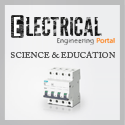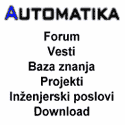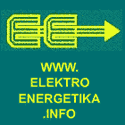1,959 views
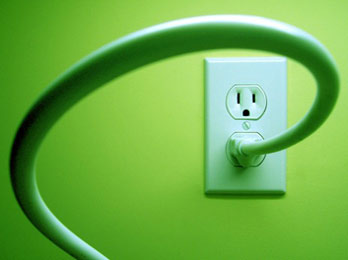
Reduction In The Cost Of Electricity
Good management in the consumption of reactive energy brings with it the following economic advantages.
These notes are based on an actual tariff structure of a kind commonly applied in Europe, designed to encourage consumers to minimize their consumption of reactive energy.
The installation of power-factor correcting capacitors on installations permits the consumer to reduce his electricity bill by maintaining the level of reactive-power consumption below a value contractually agreed with the power supply authority.
In this particular tariff, reactive energy is billed according to the tan ϕ criterion.
As previously noted:
![]()
At the supply service position, the power supply distributor delivers reactive energy free, until:
- The point at which it reaches 40% of the active energy (tan ϕ = 0.4) for a maximum period of 16 hours each day (from 06-00 h to 22-00 h) during the mostheavily loaded period (often in winter)
- Without limitation during light-load periods in winter, and in spring and summer.
During the periods of limitation, reactive energy consumption exceeding 40% of the active energy (i.e. tan ϕ > 0.4) is billed monthly at the current rates. Thus, the quantity of reactive energy billed in these periods will be:
kvarh (to be billed) = kWh (tan ϕ – 0.4) where kWh is the active energy consumed during the periods of limitation, and kWh tan ϕ is the total reactive energy during a period of limitation, and 0.4 kWh is the amount of reactive energy delivered free during a period of limitation.
Tan ϕ = 0.4 corresponds to a power factor of 0.93 so that, if steps are taken to ensure that during the limitation periods the power factor never falls below 0.93, the consumer will have nothing to pay for the reactive power consumed.
Against the financial advantages of reduced billing, the consumer must balance the cost of purchasing, installing and maintaining the power-factor-improvement capacitors and controlling switchgear, automatic control equipment (where stepped levels of compensation are required) together with the additional kWh consumed by the dielectric.
Losses of the capacitors, etc. It may be found that it is more economic to provide partial compensation only, and that paying for some of the reactive energy consumed is less expensive than providing 100% compensation.
The question of power-factor correction is a matter of optimization, except in very simple cases.
Technical/economic optimization
A high power factor allows the optimization of the components of an installation. Overating of certain equipment can be avoided, but to achieve the best results, the correction should be effected as close to the individual items of inductive plant as possible.
Reduction of cable size
Figure 1 shows the required increase in the size of cables as the power factor is reduced from unity to 0.4.

Fig. 1 : Multiplying factor for cable size as a function of cos φ
.
Related articles
- Superconducting transformers
- General about motors
- Corona ions (air ionisation)
- The Power Factor
- Wind Power Applications
2,079 views
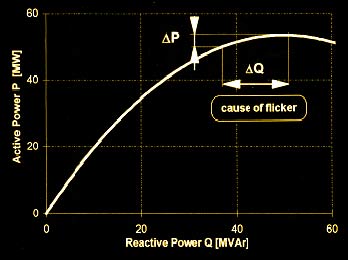
The Nature Of Reactive Energy
All inductive machines i.e. electromagnetic and devices that operate on AC systems convert electrical energy from the powersystem generators into mechanical work and heat. This energy is measured by kWh meters, and is referred to as active or wattful energy. In order to perform this conversion, magnetic fields have to be established in the machines, and these fields are associated with another form of energy to be supplied from the power system, known as reactive or wattless energy.
The reason for this is that inductive plant cyclically absorbs energy from the system (during the build-up of the magnetic fields) and re-injects that energy into the system (during the collapse of the magnetic fields) twice in every power-frequency cycle.
The effect on generator rotors is to (tend to) slow them during one part of the cycle and to accelerate them during another part of the cycle. The pulsating torque is stricly true only for single-phase alternators. In three-phase alternators the effect is mutually cancelled in the three phases, since, at any instant, the reactive energy supplied on one (or two) phase(s) is equal to the reactive energy being returned on the other two (or one) phase(s) of a balanced system. The nett result is zero average load on the generators, i.e. the reactive current is “wattless”.
An exactly similar phenomenon occurs with shunt capacitive elements in a power system, such as cable capacitance or banks of power capacitors, etc. In this case, energy is stored electrostatically. The cyclic charging and discharging of capacitive plant reacts on the generators of the system in the same manner as that described above for inductive plant, but the current flow to and from capacitive plant is in exact phase opposition to that of the inductive plant. This feature is the basis on which powerfactor improvement schemes depend.
It should be noted that while this “wattless” current (more accurately, the wattless component of a load current) does not draw power from the system, it does cause power losses in transmission and distribution systems by heating the conductors.
In practical power systems, wattless components of load currents are invariably inductive, while the impedances of transmission and distribution systems are predominantly inductively reactive. The combination of inductive current passing through an inductive reactance produces the worst possible conditions of voltage drop (i.e. in direct phase opposition to the system voltage).

Fig. 1 : An electric motor requires active power P and reactive power Q from the power system
For these reasons, viz:
- Transmission power losses and
- Voltage drop
The power-supply authorities reduce the amount of wattless (inductive) current as much as possible. Wattless (capacitive) currents have the reverse effect on voltage levels and produce voltage-rises in power systems.
The power (kW) associated with “active” energy is usually represented by the letter P. The reactive power (kvar) is represented by Q. Inductively-reactive power is conventionally positive (+ Q) while capacitively-reactive power is shown as a negative quantity (- Q). S represents kVA of “apparent” power.
Figure 1 shows that the kVA of apparent power is the vector sum of the kW of active power plus the kvar of reactive power.
Alternating current systems supply two forms of energy:
- Active energy measured in kilowatt hours (kWh) which is converted into mechanical work, heat, light, etc
- Reactive energy, which again takes two forms:
- “Reactive” energy required by inductive circuits (transformers, motors, etc.),
Plant and appliances requiring reactive energy
All AC plant and appliances that include electromagnetic devices, or depend on magnetically-coupled windings, require some degree of reactive current to create magnetic flux. The most common items in this class are transformers and reactors, motors and discharge lamps (i.e. the ballasts of).
The proportion of reactive power (kvar) with respect to active power (kW) when an item of plant is fully loaded varies according to the item concerned being:
- 65-75% for asynchronous motors
- 5-10% for transformers
SOURCE: Schneider Electric
.
Related articles
- What is PowerLogic System?
- Substation, Its Function And Types
- The Power Factor
- Hydropower In Details
- Cost benefits of AC drives
22,480 views
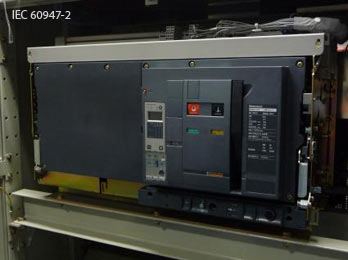
Standard IEC 60947-2 | Circuit Breakers
This standard applies to circuit-breakers, the main contacts of which are intended to be connected to circuits, the rated voltage of which does not exceed 1000 VAC or 1500 VDC.; it also contains additional requirements for integrally fused circuit-breakers.
It applies whatever the rated currents, the method of construction or the proposed applications of the circuit-breakers may be.
Changes in dependability needs and technologies have led to a marked increase in standard requirements for industrial circuit-breakers.
Conformity with standard IEC 947-2, renamed IEC 60947-2 in 1997, can be considered as an ‘all-risk’ insurance for use of circuit-breakers. This standard has been approved by all countries.
The principles
Standard IEC 60947-2 is part of a series of standards defining the specifications for LV electrical switchgear:
- the general rules IEC 60947-1, that group the definitions, specifications and tests common to all LV industrial switchgear.
- the product standards IEC 60947-2 to 7, that deal with specifications and tests specific to the product concerned. Standard IEC 60947-2 applies to circuit-breakers and their associated trip units. Circuit-breaker operating data depend on the trip units or relays that control their opening in specific conditions.
This standard defines the main data of industrial circuit-breakers:
- their classification: utilisation category, suitability for isolation, etc.
- the electrical setting data
- the information useful for operation
- the design measures
- coordination of protection devices
The standard also draws up series of conformity tests to be undergone by the circuitbreakers. These tests, which are very complete, are very close to real operating conditions. Conformity of these tests with standard IEC 60947-2 is verified by accredited laboratories.
Table of main data (appendix K IEC 60947-2):

Circuit-breaker category
Category IEC 60947-2 defines two circuit-breaker categories:
- category A circuit-breakers, for which no tripping delay is provided. This is normally the case of moulded case circuit-breakers. These circuit-breakers can provide current discrimination.
- category B circuit-breakers, for which, in order to provide time discrimination, tripping can be delayed (up to 1 s) for all short-circuits of value less than the current Icw.
This is normally the case of power or moulded case circuit-breakers with high ratings. For circuit-breakers installed in the MSBs, it is important to have an lcw equal to lcu in order to naturally provide discrimination up to full ultimate breaking capacity Icu.
Reminders of standard-related electrical data
The setting data are given by the tripping curves. These curves contain some areas limited by the following currents.

- Rated operational current (In)
In (in A rms) = maximum uninterrupted current withstood at a given ambient temperature without abnormal temperature rise.
E.g. 125 A at 40 °C - Adjustable overload setting current (lr)
Ir (in A rms) is a function of ln. lr characterises overload protection. For operation in overload, the conventional non-tripping currents lnd and tripping currents ld are:- Ind = 1.05 Ir
- Id = 1.30 Ir
Id is given for a conventional tripping time. For a current greater than ld, tripping by thermal effect will take place according to an inverse time curve. Ir is known as Long Time Protection (LTP).
Short time tripping setting current (Isd)
Isd (in kA rms) is a function of Ir. lsd characterises short-circuit protection. The circuit breaker opens according to the short time tripping curve:- either with a time delay tsd,
- or with constant I2t,
- or instantaneously (similar to instantaneous protection).
Isd is known as Short Time Protection or lm.
- Instantaneous tripping setting current (Ii)
Ii (in kA) is given as a function of ln. It characterises the instantaneous short-circuit protection for all circuit-breaker categories. For high overcurrents (short-circuits) greater than the li threshold, the circuit-breaker must immediately break the fault current.
.
This protection device can be disabled according to the technology and type of circuit-breaker (particularly B category circuit-breakers).

Table for calculation of asymmetrical short-circuits (IEC 60947.2 para. 4.3.5.3.)

- Rated short-circuit making capacity(*) (Icm)
Icm (peak kA) is the maximum value of the asymmetrical short-circuit current that the circuit-breaker can make and break. For a circuit-breaker, the stress to be managed is greatest on closing on a short-circuit. - Rated ultimate breaking capacity(*) (Icu)
Icu (kA rms) is the maximum short-circuit current value that the circuit-breaker can break. It is verified according to a sequence of standardised tests. After this sequence, the circuit-breaker must not be dangerous. This characteristic is defined for a specific voltage rating Ue. - Rated service breaking capacity(*) (Ics)
Ics (kA rms) is given by the manufacturer and is expressed as a % of Icu. This performance is very important as it gives the ability of a circuit-breaker to provide totally normal operation once it has broken this short-circuit current three times. The higher Ics, the more effective the circuit-breaker. - Rated short time withstand current(*) (Icw)
Defined for B category circuit-breakers
Icw (kA rms) is the maximum short-circuit current that the circuit-breaker can withstand for a short period of time (0.05 to 1 s) without its properties being affected. This performance is verified during the standardised test sequence.
.
(*) These data are defined for a specific voltage rating Ue.
Circuit-breaker coordination
The term coordination concerns the behaviour of two devices placed in series in electrical power distribution in the presence of a short-circuit.

- Cascading or back-up protection
This consists of installing an upstream circuit-breaker D1 to help a downstream circuit-breaker D2 to break short-circuit currents greater than its ultimate breaking capacity IcuD2. This value is marked IcuD2+D1.
IEC 60947-2 recognises cascading between two circuit-breakers. For critical points, where tripping curves overlap, cascading must be verified by tests. - Discrimination
This consists of providing coordination between the operating characteristics of circuit-breakers placed in series so that should a downstream fault occur, only the circuit-breaker placed immediately upstream of the fault will trip.
IEC 60947-2 defines a current value ls known as the discrimination limit such that:- if the fault current is less than this value ls, only the downstream circuit-breaker D2 trips,
- if the fault current is greater than this value ls, both circuit-breakers D1 and D2 trip.
Just as for cascading, discrimination must be verified by tests for critical points.
Discrimination and cascading can only be guaranteed by the manufacturer who will record his tests in tables.
IEC 60947-2 Summary
Standard IEC 60947.2 specifies the main data of Industrial Circuit-Breakers:
- the utilisation category
- the setting data
- the design measures
- etc.
It draws up a series of very complete tests representative of circuit-breaker real operating conditions.
SOURCE: Schneider Electric
.
Related articles
- Siemens MV Topic – Loss Of Vacuum
- Maintenance Of Molded Case Circuit Breakers (MCCB)
- Short Circuit Parameters in Low Voltage AC Circuits
- Cascading
- ABB launches new generation 420kV gas insulated switchgear
20,126 views
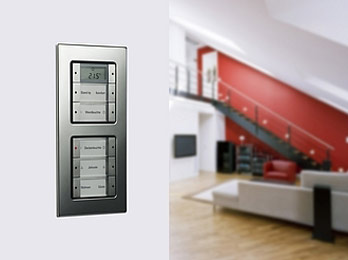
An Example Of KNX Project Design
It is basically possible to design a residential building according to criteria similar to those of a functional building and with that to plan the same functionality. The building installations usually seen up to now have for years been based on the distribution and switching of electrical energy. This method is long outdated. Private clients still tend to derive their requirements and expectations regarding electrical installations from their experiences with familiar installation technology.
But in terms of:
- comfort
- possibilities for flexible room usage
- centralised and decentralised controls
- security
- the intelligent linking of systems across different building disciplines
- communication possibilities
- environmental considerations as well as
- a reduction in the energy and operating costs,
modern installations have changed dramatically.
During a consultation, the private client is largely unaware of the range of possibilities and opportunities for future extension that are offered by an EIB installation. This information must be passed onto him as clearly as possible without overloading him with unnecessary details. He must be told that it is easily possible to expand or complete his EIB installation at a later date. Good and comprehensive consultation is the best foundation for follow-on contracts for the completion and extension of carefully planned EIB systems.
Incomplete or inadequate consultation can quickly turn an initially satisfied customer into a very unsatisfied customer, if he later learns that his investment in a bus installation cannot be fully exploited. It must be made clear however, that the answers themselves do not define the installation. They only serve to analyse the customer’s requirements as a basis for determining the feasibility.
Some of the questions hint at technical solutions that will only be available on the market in the months or years to come. They do however play a role in the suggested solutions, as it is possible to take them into consideration for implementation at a later date (preparatory cabling). Completion of this questionnaire essentially represents the specifications. An offer can then be made on the basis of this document, using the “ZVEH calculation aid”. Project design begins once the contract is awarded.
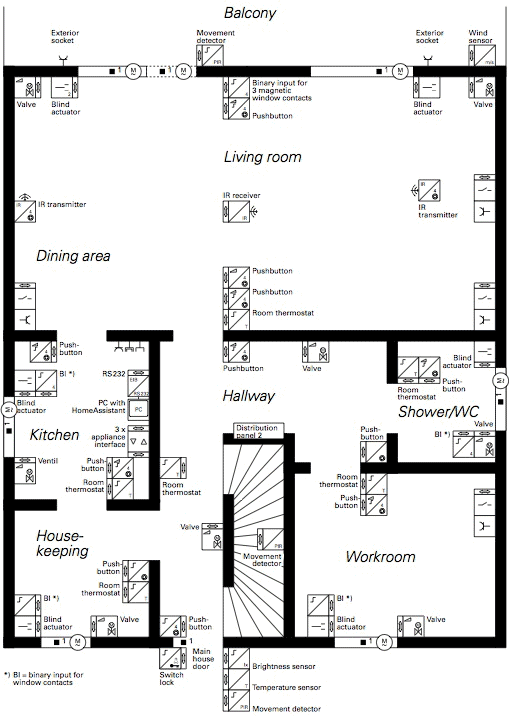
Fig.1 - KNX Project
Writing the specifications based on a given example
The answers marked in the questionnaire yield the following basic requirements on the EIB project:
- The private customer is building a one-family house with garden and garage on a remote site.
- There are distinct demands on security.
- Value is placed on ways to save energy and costs.
- Particular demands have been made regarding comfort.
- Some of the wishes cannot yet be technically realised, which means that a system planned with foresight is extremely important for follow-on contracts.
- Subsequent extensions to the system and functionality must be taken into consideration.
- A few of the possibilities mentioned in the questionnaire are viewed as critical; further information and more detailed explanations could extend the project and offer approaches to a service contract.
The system requirements essentially comprise the following:
Lighting
- Within the house, switching points should be located near the doors as well as in the sleeping and seating areas.
- Lighting control with movement detectors should also be planned for the garden and access paths.
- Security lighting should be incorporated.
- The simulation of an “occupied house” by adjustable sequences is required.
- The lighting control should be integrated into the Home-Assistant.
Sockets
- Switchable sockets should be provided for the exterior areas, kitchen, workroom and bedrooms.
- Sockets must have child-protection.
- For the simulation of an “occupied house”, switchable sockets should be planned for lights.
- The switching status of the sockets should be represented in the HomeAssistant.
Room heating
- Single room temperature control should be included, which in addition to manual intervention also allows monitoring and control via a HomeAssistant.
- The radiators should be switched off when the windows are open.
- Remote control and remote signalling should be possible for the heating system.
- Reporting to a customer services department should be planned for a later date.
Heating system
- The heating system should be adapted to the requirements in a way that saves energy and costs. It should also be possible to monitor it from a central position; i.e. it should be connected to the EIB and integrated into the HomeAssistant.
Hot water supply
- The hot water supply should be investigated separately, as a combination of gas, electricity and perhaps at a later date solar energy must be taken into account.
Blinds and shutters
- The blinds should be motorised and must react accordingly in adverse weather conditions.
- In addition to manual operating possibilities located near to the windows, it should also be possible to control and monitor them from a central position.
- In rooms subject to dazzling sunlight, it should also be possible to adjust the angle of the slats.
- The open or closed status should be centrally displayed.
- They should be incorporated into a security system.
Awnings
- In addition to manual operating possibilities, awnings installed on the patio should be automatically retracted in strong wind or rain. It should also be possible to use them to influence the temperature of the shaded room.
- They should also be used to simulate an “occupied house” and allow the possibility of control from a central position.
Window monitoring
- The closed status of the windows should be monitored and displayed centrally.
- Any tampering should be detected and incorporated into a security system.
- Motor-driven operation should be included as a possibility for use at a later date.
Door and gate monitoring
- The closed status of the house doors and garden gates is to be incorporated into a security system. Additional visual monitoring is also desired.
Monitoring the supply lines
- For extra safety, the water and gas supplies should be monitored and integrated into a security system. As this is not yet on the market, a provisional installation must be planned.
Meter monitoring
- As a prerequisite for measures to save energy and costs, the meter readings and running costs should be displayed. The installation should be designed for the future implementation of remote meter reading.
House appliances
- Regarding new purchases, interest lies in the use of devices with a bus connection. It is therefore necessary to plan, at least provisionally, the corresponding number of communication sockets.
Garden system
- In the garden and along the path to the house there should be lighting and movement detectors and these should be integrated into a general security system.
- It should be possible to operate a sprinkler system depending on the dampness of the ground.
Security equipment
- Measures should be included to increase security. This must include interior and exterior lighting, the windows, blinds and the entrance doors.
- Monitoring at the HomeAssistant with remote signalling possibilities should be planned.
- It should be possible to trigger emergency and help calls, quickly and easily.
Central operating and control unit
- A device, which is capable of receiving television signals in addition to allowing the simple operation and control of the household installations, should be fitted in the kitchen (HomeAssistant).
Extras
There is also interest in the following extensions, planned for the future:
- Cultivation of a winter garden with shadowing and utilisation of the heat energy that is produced in the transitional period.
- Lighting in the living area.
- Isolation of the bedrooms to avoid electromagnetic fields.
- Connection to service stations for the various devices.
- Construction of a garden pond with the ability to monitor the circulating pump and maintain a constant level.
- Installation of a solar panel and integration into the existing hot water supply.
An example of designing a project
Although in comparison with a large functional building, we are dealing with a much clearer installation here, a installation should be planned. This has as much to do with the variety of functions desired as well as with the high probability of later expansion. A separate line should be provided for each floor to ensure simple and clear structuring. Because this example deals with a new project, the project design is carried out with ETS 3. The result is an extensive set of detailed lists. For projects where there is a high probability of expansion or modification within subsequent years, other documents should be provided in addition to the lists.
Results of the project design stage form the foundation for all subsequent steps of the installation, commissioning and maintenance, and with that of course for all future expansion. Reference is made to the documents or wiring diagrams in accordance with the standards of the EN 61082 or DIN 40719 series, in particular to the bus devices and bus lines with physical and group addresses that are marked on the ground plan (see Fig. 1). The logic diagram indicates the bus devices and their physical addresses as well as allocation to the lines. If the complexity of the project demands, it may also be necessary to draw up a functional diagram. This saves a considerable amount of time during subsequent expansions or modifications.
If you also draw the parameter block for each of the bus devices, you are left with an excellent and very clear set of documents. The HomeAssistant necessary to implement this example system demands exact adherence to the rules of ETS 3 and to the design guidelines. Of particular importance is the entry of room structure, completion of the key fields and the addition of extra groups (so-called single actuator groups).
Adherence to these guidelines is important because the terms and names for the rooms and devices are derived from this data and appear in the operating menus of the HomeAssistant, allowing the end user to recognise his own individual system. The database created with ETS 3 is transferred into the HomeAssistant using the HomeAssistant Tool Software (HTS), which is included in the scope of supply.
SOURCE: Project Engineering for EIB Installations
.
Related articles
- ePlusMenuCAD 10 RC1 – New Release
- The New ETS4: Easy, Fast, Open
- LIGHTING FUNDAMENTALS
- ABB i-bus KNX – Constant lighting control
- Transformer heating and cooling
3,442 views
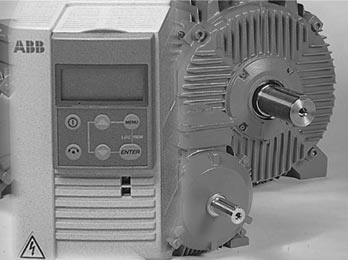
Cost benefits of AC drives
In addition to their technical advantages, AC drives also provide many cost benefits. In this chapter, these benefits are reviewed, with the costs divided into investment, installation and opera- tional costs.
At the moment there are still plenty of motors sold without variable speed AC drives. This pie chart shows how many motors below 2.2 kW are sold with frequency converters, and how many without. Only 3% of motors in this power range are sold each year with a frequency converter; 97% are sold without an AC drive.
This is astonishing considering what we have seen so far in this guide. Even more so after closer study of the costs of an AC drive compared to conventional control methods. But first let’s review AC drive technology compared to other control methods.

How many motors below 2.2 kW are sold with and without frequency converters
.
Technical differences between other systems and AC drives
AC drive technology is completely different from other, simpler control methods. It can be compared, for example, to the dif- ference between a zeppelin and a modern airplane.
We could also compare AC drive technology to the develop- ment from a floppy disk to a CD-ROM. Although it is a simpler information storage method, a floppy disk can only handle a small fraction of the information that a CD-ROM can.
The benefits of both these innovations are generally well known. Similarly, AC drive technology is based on a totally different technology to earlier control methods. In this guide, we have presented the benefits of the AC drive compared to simpler control methods.

Technical differences between other systems and AC drives
.
No mechanical control parts needed
To make a proper cost comparison, we need to study the configurations of different control methods. Here we have used pumping as an example. In traditional methods, there is always a mechanical part and an electrical part.
In throttling you need fuses, contactors and reactors on the electrical side and valves on the mechanical side. In On/Off control, the same electrical components are needed, as well as a pressure tank on the mechanical side. The AC drive provides a new solution. No mechanics are needed, because all control is already on the electrical side.
Another benefit, when thinking about cost, is that with an AC drive we can use a regular 3-phase motor, which is much cheaper than the single phase motors used in other control methods. We can still use 220 V single phase supply, when speaking of power below 2.2 kW.
| Conventional methods: | AC drive: |
| • Both electrical and mechanical parts | • All in one |
| • Many electrical parts | • Only one electrical component |
| • Mechanical parts need regular maintenance | • No mechanical parts, no wear and tear |
| • Mechanical control is energy consuming | • Saves energy |
.
Factors affecting cost
This list compares the features of conventional control methods with those of the AC drive, as well as their effect on costs. In conventional methods there are both electrical and mechanical components, which usually have to be purchased separately. The costs are usually higher than if everything could be pur- chased at once. Furthermore, mechanical parts wear out quickly. This directly affects maintenance costs and in the long run, maintenance is a very important cost item. In conventional methods there are also many electrical components. The installation cost is at least doubled when there are several different types of components rather than only one.
And last but not least, mechanical control is very energy con- suming, while AC drives practically save energy. This not only helps reduce costs, but also helps minimise environmental impact by reducing emissions from power plants.
.
Investment costs: Mechanical and electrical components

Price Comparison For Pumps
In this graph, the investment structure as well as the total price of each pump control method is presented. Only the pump itself is not added to the costs because its price is the same regardless of whether it’s used with an AC drive or valves. In throttling, there are two possibilities depending on whether the pump is used in industrial or domestic use. In an industrial environment there are stricter requirements for valves and this increases costs.
.
The motor
As can be seen, the motor is much more expensive for traditional control methods than for the AC drive. This is due to the 3-phase motor used with the AC drive and the single phase motor used in other control methods.
.
.
The AC drive
The AC drive does not need any mechanical parts, which reduc- es costs dramatically. Mechanical parts themselves are almost always less costly than a frequency converter, but electrical parts also need to be added to the total investment cost.
After taking all costs into account, an AC drive is almost always the most economical investment, when compared to differ- ent control methods. Only throttling in domestic use is as low cost as the AC drive. These are not the total costs, however. Together with investment costs we need to look at installation and operational costs.
| Throttling | AC drive | |
| Installation material | 20 USD | 10 USD |
| Installation work | 5h x 65 USD = 325 USD | 1h x 65 USD = 65 USD |
| Commissioning work | 1h x 65 USD = 65 USD | 1h x 65 USD = 65 USD |
| TOTAL: | 410 USD | 140 USD |
| Savings in installation: 270 USD! | ||
.
Installation costs: Throttling compared to AC drive
Because throttling is the second lowest investment after the AC drive, we will compare its installation and operating costs to the cost of the AC drive. As mentioned earlier, in throttling there are both electrical and mechanical components. This means twice the amount of installation material is needed.
Installation work is also at least doubled in throttling compared to the AC drive. To install a mechanical valve into a pipe is not that simple and this increases installation time. To have a mechanical valve ready for use usually requires five hours compared to one hour for the AC drive. Multiply this by the hourly rate charged by a skilled installer to get the total installation cost.
The commissioning of a throttling-based system does not usu- ally require more time than commissioning an AC drive based system. One hour is usually the time required in both cases. So now we can summarise the total installation costs. As you can see, the AC drive saves up to USD 270 per installation. So even if the throttling investment costs were lower than the price of a single phase motor (approximately USD 200), the AC drive would pay for itself before it has even worked a second.
| Throttling | AC drive | |
| Power required | 0.75 kW | 0.37 kW |
| Annual energy 4000 hours/year | 3000 kWh | 1500 kWh |
| Annual energy cost with 0.1 USD/kWh | 300 USD | 150 USD |
| Maintenance/year | 40 USD | 5 USD |
| TOTAL COST/YEAR: | 340 USD | 155 USD |
| Savings in installation: 185 USD! | ||
.
Operational costs: Maintenance and drive energy
In many surveys and experiments it has been proved that a 50% energy saving is easily achieved with an AC drive. This means that where power requirements with throttling would be 0.75 kW, with the AC drive it would be 0.37 kW. If a pump is used 4000 hours per year, throttling would need 3000 kWh and the AC drive 1500 kWh of energy per year.
To calculate the savings, we need to multiply the energy con- sumption by the energy price, which varies depending on the country. Here USD 0.1 per kWh has been used.
As mentioned earlier, mechanical parts wear a lot and this is why they need regular maintenance. It has been estimated that whereas throttling requires USD 40 per year for service, maintenance costs for an AC drive would be USD 5. In many cases however, there is no maintenance required for a frequency converter.
Therefore, the total savings in operating costs would be USD 185, which is approximately half of the frequency convert- er’s price for this power range. This means that the payback time of the frequency converter is two years. So it is worth considering that instead of yearly service for an old valve it might be more profitable to change the whole system to an AC drive based control. To retrofit an existing throttling system the pay-back time is two years.
.
Total cost comparison

Total Savings Over 10 Year - USD 1562
In the above figure, all the costs have been summarised. The usual time for an operational cost calculation for this kind of investment is 10 years. Here the operational costs are rated to the present value with a 10% interest rate.
In the long run, the conventional method will be more than twice as expensive as a frequency converter. Most of the savings with the AC drive come from the operational costs, and especially from the energy savings. It is in the installation that the high- est individual savings can be achieved, and these savings are realised as soon as the drive is installed.
Taking the total cost figure into account, it is very difficult to understand why only 3% of motors sold have a frequency con- verter. In this guide we have tried to present the benefits of the AC drive and why we at ABB think that it is absolutely the best possible way to control your process.
SOURCE: ABB Drives
.
Related articles
- The Benefits of VFDs In HVAC Systems
- General about motors
- The Best Applications For VFDs
- Nove e-knjige – ABB Technical Guides
- ABB launches new generation 420kV gas insulated switchgear
38,290 views
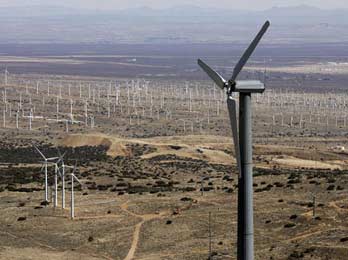
Wind Power Applications
The wind is a free, clean, and inexhaustible energy source. It has served humankind well for many centuries by propelling ships and driving wind turbines to grind grain and pump water. Denmark was the first country to use wind for generation of electricity. The Danes were using a 23-m diameter wind turbine in 1890 to generate electricity. By 1910, several hundred units with capacities of 5 to 25 kW were in operation in Denmark (Johnson, 1985). By about 1925, commercial wind-electric plants using two- and three-bladed propellers appeared on the American market. The most common brands were Win- charger (200 to 1200 W) and Jacobs (1.5 to 3 kW). These were used on farms to charge storage batteries which were then used to operate radios, lights, and small appliances with voltage ratings of 12, 32, or 110 volts. A good selection of 32-VDC appliances was developed by the industry to meet this demand.
In addition to home wind-electric generation, a number of utilities around the world have built larger wind turbines to supply power to their customers. The largest wind turbine built before the late 1970s was a 1250-kW machine built on Grandpa’s Knob, near Rutland, Vermont, in 1941. This turbine, called the Smith-Putnam machine, had a tower that was 34 m high and a rotor 53 m in diameter. The rotor turned an ac synchronous generator that produced 1250 kW of electrical power at wind speeds above 13 m/s.
After World War II, we entered the era of cheap oil imported from the Middle East. Interest in wind energy died and companies making small turbines folded. The oil embargo of 1973 served as a wakeup call, and oil-importing nations around the world started looking at wind again. The two most important countries in wind power development since then have been the U.S. and Denmark (Brower et al., 1993).
The U.S. immediately started to develop utility-scale turbines. It was understood that large turbines had the potential for producing cheaper electricity than smaller turbines, so that was a reasonable decision. The strategy of getting large turbines in place was poorly chosen, however. The Department of Energy decided that only large aerospace companies had the manufacturing and engineering capability to build utility-scale turbines. This meant that small companies with good ideas would not have the revenue stream necessary for survival. The problem with the aerospace firms was that they had no desire to manufacture utility-scale wind turbines. They gladly took the government’s money to build test turbines, but when the money ran out, they were looking for other research projects. The government funded a number of test turbines, from the 100 kW MOD-0 to the 2500 kW MOD-2. These ran for brief periods of time, a few years at most. Once it was obvious that a particular design would never be cost competitive, the turbine was quickly salvaged.
Denmark, on the other hand, established a plan whereby a landowner could buy a turbine and sell the electricity to the local utility at a price where there was at least some hope of making money. The early turbines were larger than what a farmer would need for himself, but not what we would consider utility scale. This provided a revenue stream for small companies. They could try new ideas and learn from their mistakes. Many people jumped into this new market. In 1986, there were 25 wind turbine manufacturers in Denmark. The Danish market gave them a base from which they could also sell to other countries. It was said that Denmark led the world in exports of two products: wind turbines and butter cookies! There has been consolidation in the Danish industry since 1986, but some of the com- panies have grown large. Vestas, for example, has more installed wind turbine capacity worldwide than any other manufacturer.
Prices have dropped substantially since 1973, as performance has improved. It is now commonplace for wind power plants (collections of utility-scale turbines) to be able to sell electricity for under four cents per kilowatt hour.
Total installed worldwide capacity at the start of 1999 was almost 10,000 MW, according to the trade magazine Wind Power Monthly (1999). The countries with installed capacity until end of 2009 are shown in Table 1.
| # | Nation | 2005 | 2006 | 2007 | 2008 | 2009 |
|---|---|---|---|---|---|---|
| - | European Union | 40,722 | 48,122 | 56,614 | 65,255 | 74,767 |
| 1 | United States | 9,149 | 11,603 | 16,819 | 25,170 | 35,159 |
| 2 | Germany | 18,428 | 20,622 | 22,247 | 23,903 | 25,777 |
| 3 | China | 1,266 | 2,599 | 5,912 | 12,210 | 25,104 |
| 4 | Spain | 10,028 | 11,630 | 15,145 | 16,740 | 19,149 |
| 5 | India | 4,430 | 6,270 | 7,850 | 9,587 | 10,925 |
| 6 | Italy | 1,718 | 2,123 | 2,726 | 3,537 | 4,850 |
| 7 | France | 779 | 1,589 | 2,477 | 3,426 | 4,410 |
| 8 | United Kingdom | 1,353 | 1,963 | 2,389 | 3,288 | 4,070 |
| 9 | Portugal | 1,022 | 1,716 | 2,130 | 2,862 | 3,535 |
| 10 | Denmark | 3,132 | 3,140 | 3,129 | 3,164 | 3,465 |
| 11 | Canada | 683 | 1,460 | 1,846 | 2,369 | 3,319 |
| 12 | Netherlands | 1,236 | 1,571 | 1,759 | 2,237 | 2,229 |
| 13 | Japan | 1,040 | 1,309 | 1,528 | 1,880 | 2,056 |
| 14 | Australia | 579 | 817 | 817 | 1,494 | 1,712 |
| 15 | Sweden | 509 | 571 | 831 | 1,067 | 1,560 |
Applications
There are perhaps four distinct categories of wind power which should be discussed. These are:
- Small, non-grid connected
- Small, grid connected
- Large, non-grid connected
- Large, grid connected
By small, we mean a size appropriate for an individual to own, up to a few tens of kilowatts. Large refers to utility scale.
.
Small, Non-Grid Connected
If one wants electricity in a location not serviced by a utility, one of the options is a wind turbine, with batteries to level out supply and demand. This might be a vacation home, a remote antenna and transmitter site, or a Third-World village. The costs will be high, on the order of $0.50/kWh, but if the total energy usage is small, this might be acceptable. The alternatives, photovoltaics, microhydro, and diesel generators, are not cheap either, so a careful economic study needs to be done for each situation.
.
Small, Grid Connected
The small, grid connected turbine is usually not economically feasible. The cost of wind-generated elec- tricity is less because the utility is used for storage rather than a battery bank, but is still not competitive. In order for the small, grid connected turbine to have any hope of financial breakeven, the turbine owner needs to get something close to the retail price for the wind-generated electricity. One way this is done is for the owner to have an arrangement with the utility called net metering. With this system, the meter runs backward when the turbine is generating more than the owner is consuming at the moment. The owner pays a monthly charge for the wires to his home, but it is conceivable that the utility will sometimes write a check to the owner at the end of the month, rather than the other way around. The utilities do not like this arrangement. They want to buy at wholesale and sell at retail. They feel it is unfair to be used as a storage system without remuneration. For most of the twentieth century, utilities simply refused to connect the grid to wind turbines.
The utility had the right to generate electricity in a given service territory, and they would not tolerate competition. Then a law was passed that utilities had to hook up wind turbines and pay them the avoided cost for energy. Unless the state mandated net metering, the utility typically required the installation of a second meter, one measuring energy consumption by the home and the other energy production by the turbine. The owner would pay the regular retail rate, and the utility would pay their estimate of avoided cost, usually the fuel cost of some base load generator. The owner might pay $0.08 to $0.15 per kWh, and receive $0.02 per kWh for the wind-generated electricity. This was far from enough to eco- nomically justify a wind turbine, and had the effect of killing the small wind turbine business.
.
Large, Non-Grid Connected
These machines would be installed on islands or in native villages in the far north where it is virtually impossible to connect to a large grid. Such places are typically supplied by diesel generators, and have a substantial cost just for the imported fuel. One or more wind turbines would be installed in parallel with the diesel generators, and act as fuel savers when the wind was blowing.
This concept has been studied carefully and appears to be quite feasible technically. One would expect the market to develop after a few turbines have been shown to work for an extended period in hostile environments. It would be helpful if the diesel maintenance companies would also carry a line of wind turbines so the people in remote locations would not need to teach another group of maintenance people about the realities of life at places far away from the nearest hardware store.
.
Large, Grid Connected
We might ask if the utilities should be forced to buy wind-generated electricity from these small machines at a premium price which reflects their environmental value. Many have argued this over the years. A better question might be whether the small or the large turbines will result in a lower net cost to society. Given that we want the environmental benefits of wind generation, should we get the electricity from the wind with many thousands of individually owned small turbines, or should we use a much smaller number of utility-scale machines?
If we could make the argument that a dollar spent on wind turbines is a dollar not spent on hospitals, schools, and the like, then it follows that wind turbines should be as efficient as possible. Economies of scale and costs of operation and maintenance are such that the small, grid connected turbine will always need to receive substantially more per kilowatt hour than the utility-scale turbines in order to break even. There is obviously a niche market for turbines that are not connected to the grid, but small, grid connected turbines will probably not develop a thriving market. Most of the action will be from the utility-scale machines.
Sizes of these turbines have been increasing rapidly. Turbines with ratings near 1 MW are now common, with prototypes of 2 MW and more being tested. This is still small compared to the needs of a utility, so clusters of turbines are placed together to form wind power plants with total ratings of 10 to 100 MW.
SOURCE: Saifur Rahman Virginia Tech
.
Related articles
- Introduction To Micro Hydropower
- Corona ions (air ionisation)
- Reduction In The Cost Of Electricity
- The Unique Role Of Wind Turbine Step-Up (WTSU) Transformers
- Storage Systems
9,916 views
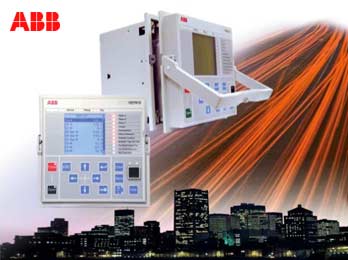
ABB Feeder Protection REF615 ANSI
The REF615 is powerful, most advanced and simplest feeder protection relay in its class, perfectly offering time and instantaneous overcurrent, negative sequence overcurrent, phase discontinuity, breaker failure and thermal overload protection. The relay also features optional high impedance fault (HIZ) and sensitive earth fault (SEF) protection for grounded and ungrounded distribution systems. Also, the relay incorporates a flexible three-phase multi-shot auto-reclose function for automatic feeder restoration in temporary faults on overhead lines. Enhanced with safety options, the relay offers a three-channel arc-fault detection system for supervision of the switchgear circuit breaker, cable and busbar compartments.
The REF615 also integrates basic control functionality, which facilitates the control of one circuit breaker via the relay’s front panel human machine interface (HMI) or remote control system. To protect the relay from unauthorized access and to maintain the integrity of information, the relay has been provided with a four-level, role-based user authentication system, with individual passwords for the viewer, operator, engineer and administrator level. The access control system applies to the front panel HMI, embedded web browser based HMI and the PCM600 relay setting and configuration tool.
Standardized communication
REF615 supports the new IEC 61850 standard for inter-device communication in substations. The relay also supports the industry standard DNP3.0 and Modbus® protocols.
The implementation of the IEC 61850 substation communication standard in REF615 encompasses both vertical and horizontal communication, including GOOSE messaging and parameter setting according to IEC 61850-8-1. The substation configuration language enables the use of engineering tools for automated configuration, commissioning and maintenance of substation devices.
Bus protection via GOOSE
The REF615 IEC 61850 implementation includes GOOSE messaging for fast horizontal relay-to-relay communication. Applying GOOSE communication to the REF615 relays of the incoming and outgoing feeders of a substation, a stable, reliable and high-speed bus protection system can be realized. The cost-effective GOOSE-based bus protection is obtained just by configuring the relays and the operational availability of the protection is assured by continuous supervision of the protection relays and their GOOSE messaging over the station communication network.
Costs are reduced since no separate physical input and output hard-wiring is needed for horizontal communication between the relays.

Bus protection via GOOSE
Pre-emptive condition monitoring
For continuous knowledge of the operational availability of the REF615 features, a comprehensive set of monitoring functions to supervise the relay health, the trip circuit and the circuit breaker health is included. The breaker monitoring can include checking the wear and tear of the circuit breaker, the spring charging time of the breaker operating mechanism and the gas pressure of the breaker chambers. The relay also monitors the breaker travel time and the number of circuit breaker (CB) operations to provide basic information for scheduling CB maintenance.
Rapid set-up and commissioning
Due to the ready-made adaptation of REF615 for the protection of feeders, the relay can be rapidly set up and commissioned, once it has been given the application- specific relay settings. If the relay needs to be adapted to the special requirements of the intended application, the flexibility of the relay allows the relay’s standard signal configuration to be adjusted by means of the signal matrix tool (SMT) included in its PCM600 relay setting and configuration user tool.
By means of Connectivity Packages containing complete descriptions of ABB’s protection relays, with data signals, parameters and addresses, the relays can be automatically configured via PCM600 relay setting and configuration user tool, COM600 Station Automation series devices, or MicroSCADA Pro substation automation system.
Unique draw-out design relay
The draw-out type relay design speeds up installation and testing of the protection. The factory-tested relay units can be withdrawn from the relay cases during factory and commissioning tests. The relay case provides automatic short-circuiting of the CT secondary circuits to prevent hazardous voltages from arising in the CT circuits when a relay plug-in unit is withdrawn from its case.
The pull-out handle locking the relay unit into its case can be sealed to prevent the unit from being unintentionally withdrawn from the relay case.
REF615 highlights
- Comprehensive overcurrent protection with high impedance fault, sensitive earth fault and thermal overload protection for feeder and dedicated protection schemes
- Simultaneous DN3.0 Level 2+ and Modbus Ethernet communications plus device connectivity and system interoperability according to the IEC 61850 standard for next generation substation communication
- Enhanced digital fault recorder functionality including high sampling frequency, extended length of records, 4 analog and 64 binary channels and flexible triggering possibilities
- High-speed, three-channel arc flash detection (AFD) for increased personal safety, reduced material damage and minimized system down-time
- Total control of the operational capability of the protection system through extensive condition monitoring of the relay and the associated primary equipment
- Draw-out type relay unit and a unique relay case design for a variety of mounting methods and fast installation, routine testing and maintenance
- One single tool for managing relay settings, signal configuration and disturbance handling
Analog inputs
- Three phase currents: 5/1 A
- Ground current: 5/1 A or 0.2 A
- Rated frequency: 60/50 Hz programmable
Binary inputs and outputs
- Four binary inputs with common ground
- Two NO double-pole outputs with TCM
- Two NO single-pole outputs
- One Form C signal output
- One Form C self-check alarm output
- Additional seven binary inputs plus three binary outputs (available as an option)
Communication
- IEC 61850-8-1 with GOOSE messaging
- DNP3.0 Level 2+ over TCP/IP
- Modbus over TCP/IP
- Time synchronization via SNTP (primary and backup servers)
- Optional serial RS-485 port programmable for DNP3.0 Level 2+ or Modbus RTU
Control voltage
- Option 1: 48 … 250 V dc, 100 … 240 V ac
- Option 2: 24 … 60 V dc
.
SOURCE: ABB
.
Related articles
- ANSI code 50BF – Breaker failure
- ANSI standards for protection devices
- Line Protection With Distance Relays
- Testing performances of IEC 61850 GOOSE messages
- Grounded or Ungrounded Systems
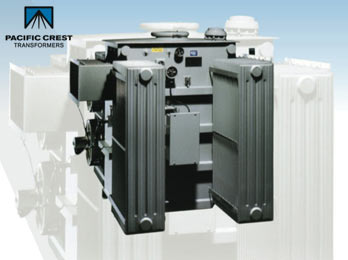
The Unique Role Of Wind Turbine WTSU
Harnessing wind energy to perform work is not a new concept. Since the earliest of times, wind power has been captured with sails to allow traders, merchants and explorers to ply their trades and discover the world around them. On land, windmills have been used for irrigation, grinding grains, and performing crude manufacturing for centuries. Even the generation of electricity from wind power is not a new idea. What is new, however, is the scale at which this renewable energy source is being used today.
Early wind generation served a local need, often supplying power for isolated equipment. Today, wind energy represents nearly 5% of the US electrical generation and is targeted to reach 20% in the foreseeable future.
For this to happen, wind turbine outputs need to be gathered, stepped-up to transmission levels and passed across the nation’s interconnected power grid to the end users. The role of the Wind Turbine Step-Up (WTSU) transformer in this process is critical and, as such, its design needs to be carefully and thoughtfully analyzed and reevaluated in our view.
Historically this WTSU transformer function has been handled by conventional, “off the shelf” distribution transformers, but the relatively large numbers of recent failures would strongly suggest that WTSU transformer designs need to be made substantially more robust. WTSU transformers are neither conventional “off the shelf” distribution transformers nor are they conventional “off the shelf” power generator step-up transformers. WTSU transformers fall somewhere in between and as such, we believe, require a unique design standard.
Although off-shore wind farms using dry-type transformers are beginning to grow in popularity, for this discussion we will look only at liquid-filled transformers that are normally associated with inland wind farm sites.
Transformer Loading
Wind turbine output voltages typically range from 480 volts to 690 volts. This turbine output is then delivered to the WTSU transformers and transformed to a collector voltage of 13,800 to 46,000 volts. The turbines are highly dependant upon local climatic conditions; and this dependency can result in yearly average load factor as low as 35%. Both conventional distribution transformers and power generator step-up transformers are typically subjected to more constant loading at, or slightly above, their theoretical maximum rating. This high level of loading stresses insulation thermally and leads to reduced insulation life. On the other hand, the relatively light loading of WTSU transformer has a favorable effect on insulation life but introduces two unique and functionally significant problems with which other types of conventional transformers do not have to deal.
The first problem is that, when lightly loaded or idle, the core losses become a more significant economic factor while the coil or winding losses become less significant and de-emphasized. Typically used price evaluation formulae do not apply to this scenario. NEMA TP1 and DOE efficiencies are not modeled for the operational scenario where average loading is near 30-35% and, consequently, should be cautiously applied when calculating the total cost of ownership for WTSU transformers.
The second problem is that the WTSU transformer goes into thermal cycling as a function of these varying loads. This causes repeated thermal stress on the winding, clamping structure, seals and gaskets. Repeated thermal cycling causes nitrogen gas to be absorbed into the hot oil and then released as the oil cools, forming bubbles within the oil which can migrate into the insulation and windings to create hot spots and partial discharges which can damage insulation. The thermal cycling can also cause accelerated aging of internal and external electrical connections.
These cumulative effects put the WTSU transformer at a higher risk of insulation and dielectric failure than either the typical “off the shelf” distribution transformer or the power generator step-up transformer experiences.
Harmonics and Non-Sinusoidal loads:
Another unique aspect of WTSU transformers is the fact that they are switched in the line with solid state controls to limit the inrush currents. This differs widely from the typical step-up transformer which must be designed to withstand high magnetizing inrush currents which cause core saturation, and in the extreme Ferroresonance.
While potentially aiding in the initial energization, these same electronic controls contribute damaging harmonic voltage frequencies that, when coupled with the non- sinusoidal wave forms from the wind turbines, cannot be ignored from a heating point of view. Conventional distribution transformers do not typically see non-linear loads that require preventative steps due to harmonic loading. When a rectifier/chopper system is used, the WTSU transformer must be designed for harmonics similar to rectifier transformers, taking the additional loading into consideration as well as providing electrostatic shields to prevent the transfer of harmonic frequencies between the primary and secondary windings, quite dissimilar to conventional distribution transformers.
Transformer sizing and voltage variation
WTSU transformers are designed such that the voltage is matched to the generator (e.g. wind turbine) output voltage exactly. There is no “designed in” over-voltage capacity to overcome voltage fluctuations, as is typically done on distribution and power transformer designs which allow for up to 10% over-voltage. Further, it should be noted that the generator output current is monitored at millisecond intervals and the generator limited to allow up to 5% over-current for 10 seconds before it is taken off the system. Therefore, the WTSU transformer size ( kVA or MVA) is designed to match the generator output with no overload sizing. Since overload sizing is a common protective practice with “off the shelf” distribution or power step-up generator transformers, the WTSU transformer design must be uniquely robust to function without it.
Requirement to withstand Fault Currents
Typically, conventional distribution transformers, power transformers, and other types of step-up transformers will “drop out” when subjected to an under-voltage or over- current situation caused by a fault. Once the fault has cleared, the distribution transformer is brought back on-line either individually or with it’s local feeder in conjunction with automatic reclosures. Wind turbine generators, on the other hand, in order to maintain network stability are only allowed to disconnect from the system due to network disturbances within certain, carefully controlled network guidelines developed for generating plants.
Depending upon the specific network regulations, the length of time the generator is required to stay on line can vary. During this time the generator will continue to deliver an abnormally low voltage to the WTSU transformer. Therefore, during near-to generator faults, the generator may be required to carry as low as 15% rated voltage for a few cycles and then ramp back up to full volts a few seconds after fault clearing. This means that the WTSU transformer must be uniquely designed with enough “ruggedness” to withstand full short circuit current during the initial few cycles when the maximum mechanical forces are exerted upon the WTSU transformer windings.
Since wind turbines must stay connected during disturbances in the network, the WTSU transformers must be designed to withstand the full mechanical effects of short circuits.
Conclusions
The role of WTSU transformers in today’s wind generation scheme is unique; it’s design must be equally unique and robust. The combination of wide variations in loading; harmonic loads from associated control electronics and generators; sizing without protection for over-voltages, under-voltages or over-loading; and the requirement to “ride through” transient events and faults sets the WTSU apart from it’s more conventional, “off the shelf” counterparts. It is neither a conventional distribution transformer nor is it a conventional generator step-up transformer.
“Off the shelf” . . . doesn’t belong . . . “down on the farm”!
.
AUTHOR: Pacific Crest Transformers
.
Related articles
- ABB Power Transformers – A guide to manufacturing
- Transformer Ratings
- Introduction To Micro Hydropower
- Substation, Its Function And Types
- Wind Power Applications
1,557 views
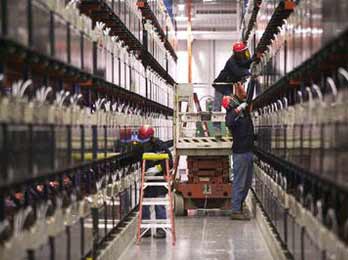
Storage Systems | ABB Battery
Energy storage technologies are of great interest to electric utilities, energy service companies, and automobile manufacturers (for electric vehicle application). The ability to store large amounts of energy would allow electric utilities to have greater flexibility in their operation because with this option the supply and demand do not have to be matched instantaneously. The availability of the proper battery at the right price will make the electric vehicle a reality, a goal that has eluded the automotive industry thus far. Four types of storage technologies (listed below) are discussed in this section, but most emphasis is placed on storage batteries because it is now closest to being commercially viable. The other storage technology widely used by the electric power industry, pumped-storage power plants, is not discussed as this has been in commercial operation for more than 60 years in various countries around the world.
- Flywheel storage
- Compressed air energy storage
- Superconducting magnetic energy storage
- Battery storage
Flywheel Storage
Flywheels store their energy in their rotating mass, which rotates at very high speeds (approaching 75,000 rotations per minute), and are made of composite materials instead of steel because of the composite’s ability to withstand the rotating forces exerted on the flywheel. In order to store enegy the flywheel is placed in a sealed container which is then placed in a vacuum to reduce air resistance. Magnets embedded in the flywheel pass near pickup coils. The magnet induces a current in the coil changing the rotational energy into electrical energy.
Flywheels are still in research and development, and commercial products are several years away.
Compressed Air Energy Storage
As the name implies, the compressed air energy storage (CAES) plant uses electricity to compress air which is stored in underground reservoirs. When electricity is needed, this compressed air is withdrawn, heated with gas or oil, and run through an expansion turbine to drive a generator. The compressed air can be stored in several types of underground structures, including caverns in salt or rock formations, aquifers, and depleted natural gas fields. Typically the compressed air in a CAES plant uses about one third of the premium fuel needed to produce the same amount of electricity as in a conventional plant. A 290-MW CAES plant has been in operation in Germany since the early 1980s with 90% availability and 99% starting reliability. In the U.S., the Alabama Electric Cooperative runs a CAES plant that stores compressed air in a 19-million cubic foot cavern mined from a salt dome. This 110-MW plant has a storage capacity of 26 h. The fixed-price turnkey cost for this first-of-a-kind plant is about $400/kW in constant 1988 dollars.
The turbomachinery of the CAES plant is like a combustion turbine, but the compressor and the expander operate independently. In a combustion turbine, the air that is used to drive the turbine is compressed just prior to combustion and expansion and, as a result, the compressor and the expander must operate at the same time and must have the same air mass flow rate. In the case of a CAES plant, the compressor and the expander can be sized independently to provide the utility-selected “optimal” MW charge and discharge rate which determines the ratio of hours of compression required for each hour of turbine-generator operation. The MW ratings and time ratio are influenced by the utility’s load curve, and the price of off-peak power.
For example, the CAES plant in Germany requires 4 h of compression per hour of generation. On the other hand, the Alabama plant requires 1.7 h of compression for each hour of generation. At 110-MW net output, the power ratio is 0.818 kW output for each kilowatt input. The heat rate (LHV) is 4122 BTU/kWh with natural gas fuel and 4089 BTU/kWh with fuel oil. Due to the storage option, a partial-load operation of the CAES plant is also very flexible. For example, the heat rate of the expander increases only by 5%, and the airflow decreases nearly linearly when the plant output is turned down to 45% of full load. However, CAES plants have not reached commercial viability beyond some prototypes.
Superconducting Magnetic Energy Storage
A third type of advanced energy storage technology is superconducting magnetic energy storage (SMES), which may someday allow electric utilities to store electricity with unparalled efficiency (90% or more). A simple description of SMES operation follows.
The electricity storage medium is a doughnut-shaped electromagnetic coil of superconducting wire. This coil could be about 1000 m in diameter, installed in a trench, and kept at superconducting temper- ature by a refrigeration system. Off-peak electricity, converted to direct current (DC), would be fed into this coil and stored for retrieval at any moment. The coil would be kept at a low-temperature supercon- ducting state using liquid helium.
The time between charging and discharging could be as little as 20 ms with a round-trip AC–AC efficiency of over 90%.
Developing a commercial-scale SMES plant presents both economic and technical challenges. Due to the high cost of liquiud helium, only plants with 1000-MW, 5-h capacity are economically attractive. Even then the plant capital cost can exceed several thousand dollars per kilowatt. As ceramic superconductors, which become superconducting at higher temperatures (maintained by less expensive liquid nitrogen), become more widely available, it may be possible to develop smaller scale SMES plants at a lower price.
Battery Storage
Even though battery storage is the oldest and most familiar energy storage device, significant advances have been made in this technology in recent years to deserve more attention. There has been renewed interest in this technology due to its potential application in non-polluting electric vehicles. Battery systems are quiet and non-polluting, and can be installed near load centers and existing suburban substations. These have round-trip AC–AC efficiencies in the range of 85%, and can respond to load changes within 20 ms. Several U.S., European, and Japanese utilities have demonstrated the application of lead–acid batteries for load-following applications. Some of them have been as large as 10 MW with 4 h of storage.
The other player in battery development is the automotive industry for electric vehicle application. In 1991, General Motors, Ford, Chrysler, Electric Power Research Institute (EPRI), several utilities, and the U.S. Department of Energy (DOE) formed the U.S. Advanced Battery Consortium (USABC) to develop better batteries for electric vehicle (EV) applications. A brief introduction to some of the available battery technologies as well some that are under study is presented in the following (Source:http://www.eren. doe.gov/consumerinfo/refbriefs/fa1/html).
Battery Types
Chemical batteries are individual cells filled with a conducting medium-electrolyte that, when connected together, form a battery. Multiple batteries connected together form a battery bank. At present, there are two main types of batteries: primary batteries (non-rechargeable) and secondary batteries (rechargeable). Secondary batteries are further divided into two categories based on the operating temperature of the electrolyte. Ambient operating temperature batteries have either aqueous (flooded) or nonaqueous elec- trolytes. High operating temperature batteries (molten electrodes) have either solid or molten electrolytes. Batteries in EVs are the secondary-rechargeable-type and are in either of the two sub-categories. A battery for an EV must meet certain performance goals.
These goals include quick discharge and recharge capability, long cycle life (the number of discharges before becoming unserviceable), low cost, recycla- bility, high specific energy (amount of usable energy, measured in watt-hours per pound [lb] or kilogram [kg]), high energy density (amount of energy stored per unit volume), specific power (determines the potential for acceleration), and the ability to work in extreme heat or cold. No battery currently available meets all these criteria.
Lead–Acid Batteries
Lead–acid starting batteries (shallow-cycle lead–acid secondary batteries) are the most common battery used in vehicles today. This battery is an ambient temperature, aqueous electrolyte battery. A cousin to this battery is the deep-cycle lead–acid battery, now widely used in golf carts and forklifts. The first electric cars built also used this technology. Although the lead–acid battery is relatively inexpensive, it is very heavy, with a limited usable energy by weight (specific energy). The battery’s low specific energy and poor energy density make for a very large and heavy battery pack, which cannot power a vehicle as far as an equivalent gas-powered vehicle. Lead–acid batteries should not be discharged by more than 80% of their rated capacity or depth of discharge (DOD). Exceeding the 80% DOD shortens the life of the battery. Lead–acid batteries are inexpensive, readily available, and are highly recyclable, using the elaborate recycling system already in place. Research continues to try to improve these batteries.
A lead–acid nonaqueous (gelled lead acid) battery uses an electrolyte paste instead of a liquid. These batteries do not have to be mounted in an upright position. There is no electrolyte to spill in an accident. Nonaqueous lead–acid batteries typically do not have as high a life cycle and are more expensive than flooded deep-cycle lead–acid batteries.
Nickel Iron and Nickel Cadmium Batteries
Nickel iron (Edison cells) and nickel cadmium (nicad) pocket and sintered plate batteries have been in use for many years. Both of these batteries have a specific energy of around 25 Wh/lb (55 Wh/kg), which is higher than advanced lead–acid batteries. These batteries also have a long cycle life. Both of these batteries are recyclable. Nickel iron batteries are non-toxic, while nicads are toxic. They can also be discharged to 100% DOD without damage. The biggest drawback to these batteries is their cost. Depend- ing on the size of battery bank in the vehicle, it may cost between $20,000 and $60,000 for the batteries. The batteries should last at least 100,000 mi (160,900 km) in normal service.
Nickel Metal Hydride Batteries
Nickel metal hydride batteries are offered as the best of the next generation of batteries. They have a high specific energy: around 40.8 Wh/lb (90 Wh/kg). According to a U.S. DOE report, the batteries are benign to the environment and are recyclable. They also are reported to have a very long cycle life. Nickel metal hydride batteries have a high self-discharge rate: they lose their charge when stored for long periods of time. They are already commercially available as “AA” and “C” cell batteries, for small consumer appliances and toys. Manufacturing of larger batteries for EV applications is only available to EV manufacturers. Honda is using these batteries in the EV Plus, which is available for lease in California.
Sodium Sulfur Batteries
This battery is a high-temperature battery, with the electrolyte operating at temperatures of 572°F (300°C). The sodium component of this battery explodes on contact with water, which raises certain safety concerns. The materials of the battery must be capable of withstanding the high internal temper- atures they create, as well as freezing and thawing cycles. This battery has a very high specific energy: 50 Wh/lb (110 Wh/kg). The Ford Motor Company uses sodium sulfur batteries in their Ecostar, a converted delivery minivan that is currently sold in Europe. Sodium sulfur batteries are only available to EV manufacturers.
Lithium Iron and Lithium Polymer Batteries
The USABC considers lithium iron batteries to be the long-term battery solution for EVs. The batteries have a very high specific energy: 68 Wh/lb (150 Wh/kg). They have a molten-salt electrolyte and share many features of a sealed bipolar battery. Lithium iron batteries are also reported to have a very long cycle life. These are widely used in laptop computers. These batteries will allow a vehicle to travel distances and accelerate at a rate comparable to conventional gasoline-powered vehicles. Lithium polymer batteries eliminate liquid electrolytes. They are thin and flexible, and can be molded into a variety of shapes and sizes.
Neither type will be ready for EV commercial applications until early in the 21st century.
Zinc and Aluminum Air Batteries
Zinc air batteries are currently being tested in postal trucks in Germany. These batteries use either aluminum or zinc as a sacrificial anode. As the battery produces electricity, the anode dissolves into the electrolyte. When the anode is completely dissolved, a new anode is placed in the vehicle. The aluminum or zinc and the electrolyte are removed and sent to a recycling facility. These batteries have a specific energy of over 97 Wh/lb (200 Wh/kg). The German postal vans currently carry 80 kWh of energy in their battery, giving them about the same range as 13 gallons (49.2 liters) of gasoline. In their tests, the vans have achieved a range of 615 mi (990 km) at 25 miles per hour (40 km/h).
.
SOURCE: Rahman, Saifur “Electric Power Generation: Non-Conventional Methods”
.
Related articles
- Wind Power Storage
- Superconducting transformers
- Shielding Of Power Cables
- Corona ions (air ionisation)
- Hydropower In Details
8,036 views

Connecting wind turbines to the power grid
Precautions to be taken when connecting wind turbines to the power grid: The procedure for connecting wind turbines to an electric distribution network normally consists of 2 steps:
1. First, the HV/LV transformer is energized from the high voltage side,
2. Then, in the right wind conditions and further to wind turbine adjustment tests (initial pole test, pole test sequence, etc.), the turbine is connected to the power grid as follows:
- The rotation of the wind turbine’s blades triggers the aerogenerator (motorgenerator set), which acts as a generator,
- The transformer’s LV winding is energized by the wind turbine’s stator (connected by a star or delta connection) and hence provides electrical energy to the HV network.
However, during this 2-step process, the HV/LV transformer must not, in any event whatsoever, be supplied with high and low voltage currents at the same time. In such an event, there would be a risk of energizing the LV voltage side in opposite phase to the HV side.
The result would be an extremely strong current, the intensity of which would be greater than the brief, 3-phase short-circuit current stipulated in the contract (usually 2 seconds).

General diagram of a wind turbine installation
As the electrodynamic stress on the windings is proportional to the square of the current intensity (F = K.I2), the transformer can not, in general, withstand the extremely intense stress caused by a current greater than the contractual short-circuit current. This type of stress would automatically lead to significant, unacceptable and irreversible mechanical deformation of the LV and HV windings, and the LV connections: hence it would, in due course, totally destroy the transformer.
On-site transformer failures have occurred, as a result of energizing the LV and HV sides at the same time and failing to comply with the phase sequence of the LV network.
The LV winding was subjected to a current much stronger than the contractual 3-phase short-circuit current and, as a result, the transformer was completely destroyed by huge electrodynamic stress.
.
Measures to apply in all circumstances…

Power HV/LV Transformer
Therefore, when connecting a wind turbine transformer to a power grid, it is absolutely essential not to energize the LV and HV sides of the transformer at the same time, which may cause the LV winding to be in opposite phase.
Hence, it is extremely important not to interfere with the various tripping sequences, and to comply with the adjustment specifications for the transformer in question.
If the transformer is energized from both sides and, in addition, the phase sequence of the LV network is not respected, the result will be total transformer failure.
.
SOURCE: France Transfo
.
Related articles
- What is PowerLogic System?
- Maintenance Of High Voltage Circuit Breakers
- ABB launches new generation 420kV gas insulated switchgear
- Superconducting transformers
- Arc-resistant low voltage switchgear
18,039 views
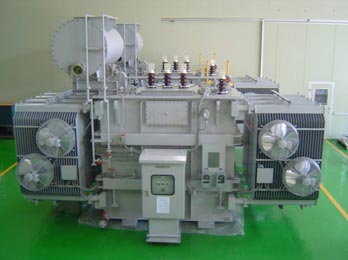
Transformer Ratings
Transformer size or capacity is most often expressed in kVA. “We require 30 kVA of power for this system” is one example, or “The facility has a 480 VAC feed rated for 112.5 kVA”.
However, reliance upon only kVA rating can result insafety and performance problems when sizing transformers to feed modern electronic equipment.
Use of off-the-shelf, general purpose transformers for electronics loads can lead to power quality and siting problems:
- Single phase electronic loads can cause excessive transformer heating.
- Electronic loads draw non-linear currents, resulting in low voltage and output voltage distortion.
- Oversizing for impedance and thermal performance can result in a transformer with a significantly larger footprint.
It is vital for the systems designer to understand all of the factors that affect transformer effectiveness and performance.
.
Thermal Performance
Historically, transformers have been developed to supply 60 Hz, linear loads such as lights, motors, and heaters. Electronic loads were a small part of the total connected load. A system designer could be assured that if transformer voltage and current ratings were not exceeded, the transformer would not overheat, and would perform as expected. A standard transformer is designed and specified with three main parameters: kVA Rating, Impedance, and Temperature Rise.
.
KVA Rating
The transformer voltage and current specification. KVA is simply the load voltage times the load current. A single phase transformer rated for 120 VAC and 20 Amperes would be rated for 120 x 20 = 2400 VA, or 2.4 KVA (thousand VA).
.
Impedance
Transformer Impedance and Voltage Regulation are closely related: a measure of the transformer voltage drop when supplying full load current. A transformer with a nominal output voltage of 120 VAC and a Voltage Regulation of 5% has an output voltage of 120 VAC at no-load and (120 VAC – 5%) at full load – the transformer output voltage will be 114 VAC at full load. Impedance is related to the transformer thermal performance because any voltage drop in the transformer is converted to heat in the windings.
.
Temperature Rise
Steel selection, winding capacity, impedance, leakage current, overall steel and winding design contribute to total transformer heat loss. The transformer heat loss causes the transformer temperature to rise. Manufacturers design the transformer cooling, and select materials, to accommodate this temperature rise.

Transformer Heat Loss
Use of less expensive material with a lower temperature rating will require the manufacturer to design the transformer for higher airflow and cooling, often resulting in a larger transformer. Use of higher quality materials with a higher temperature rating permits a more compact transformer design.
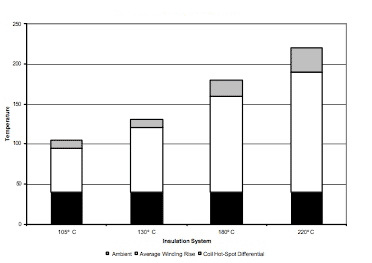
Transformer Insulation Systems
.
“K” Factor Transformer Rating
In the 1980′s, power quality engineers began encountering a new phenomenon: non-linear loads, such as computers and peripherals, began to exceed linear loads on some distribution panels. This resulted in large harmonic currents being drawn, causing excessive transformer heating due to eddy-current losses, skin effect, and core flux density increases.
Standard transformers, not designed for nonlinear harmonic currents were overheating and failing even though RMS currents were well within transformer ratings.
In response to this problem, IEEE C57.110-1986 developed a method of quantifying harmonic currents. A “k” factor was the result, calculated from the individual harmonic components and the effective heating such a harmonic would cause in a transformer. Transformer manufacturers began designing transformers that could supply harmonic currents, rated with a “k” factor. Typical “K” factor applications include:
- K-4: Electric discharge lighting, UPS with input filtering, Programmable logic controllers and solid state controls
- K-13: Telecommunications equipment, UPS systems, multi-wire receptacle circuits in schools, health-care, and production areas
- K-20: Main-frame computer loads, solid state motor drives, critical care areas of hospitals
“K” factor is a good way to assure that transformers will not overheat and fail. However, “K” factor is primarily concerned with thermal issues. Selection of a “K” factor transformer may result in power quality improvement, but this depends upon manufacturer and design.
.
Transformer Impedance
Transformer impedance is the best measure of the transformer’s ability to supply an electronic load with optimum power quality. Many power problems do not come from the utility but are internally generated from the current requirements of other loads.
While a “K” factor transformer can feed these loads and not overheat, a low impedance transformer will provide the best quality power. As an example, consider a 5% impedance transformer. When an electronic load with a 200% inrush current is turned on, a voltage sag of 10% will result. A low impedance transformer (1%) would provide only a 2% voltage sag – a substantial improvement. Transformer impedance may be specified as a percentage, or alternately, in Ohms (Ω) from Phase- Phase or Phase-Neutral.
.
High Frequency Transformer Impedance
Most transformer impedance discussions involve the 60 Hz transformer impedance. This is the power frequency, and is the main concern for voltage drops, fault calculations, and power delivery. However, nonlinear loads draw current at higher harmonics. Voltage drops occur at both 60 Hz and higher frequencies. It is common to model transformer impedance as a resistor, often expressed in ohms. In fact, a transformer behaves more like a series resistor and inductor.
The voltage drop of the resistive portion is independent of frequency, the voltage drop of the inductor is frequency dependent.
Standard Transformer impedances rise rapidly with frequency. However, devices designed specifically for use with nonlinear loads use special winding and steel lamination designs to minimize impedance at both 60 Hz and higher frequencies. As a result, the output voltage of such designs is far better quality than for standard transformers.
.
Recommendations for Transformer Sizing
System design engineers who must specify and apply transformers have several options when selecting transformers.
.
Do It Yourself Approach
With this approach, a larger than required standard transformer is specified in order to supply harmonic currents and minimize voltage drop. Transformer oversizing was considered prudent design in the days before transformer manufacturers understood harmonic loads, and remains an attractive option from a pure cost standpoint. However, such a practice today has several problems:
- A larger footprint and volume than low impedance devices specifically designed for non-linear loads
- Poor high frequency impedance
- Future loads may lead to thermal and power quality problems
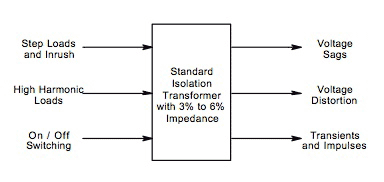
Standard Isolation Transformer
.
“K”-factor Rated Transformers
Selecting and using “K”-factor rated transformers is a prudent way to ensure that transformer overheating will not occur. Unfortunately, lack of standardization makes the “K” factor rating a measure only of thermal performance, not impedance or power quality.
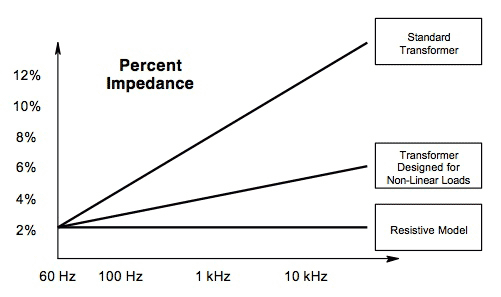
Percent Impedance
Some manufacturers achieve a good “K” factor using design techniques that lower impedance and enhance power quality, others simply derate components and temperature ratings. Only experience with a particular transformer manufacturer can determine if a “K” factor transformer addresses both thermal and power quality concerns.
.
Transformers Designed for Non-Linear Loads
Transformers designed specifically for non-linear loads incorporate substantial design improvements that address both thermal and power quality concerns. Such devices are low impedance, compact, and have better high frequency performance than standard or “K” factor designs. As a result, this type of transformer is the optimum design solution.
This type of transformer may be more expensive than standard transformers, due to higher amounts of iron and copper, higher quality materials, and more expensive winding and stacking techniques. However, the benefits of such a design in power quality and smaller size justify the extra cost, and make the low impedance transformer the most cost effective design overall.
.
Related articles
- Transformer heating and cooling
- The Unique Role Of Wind Turbine Step-Up (WTSU) Transformers
- Dry-Type disc wound transformers in MV applications
- ABB Power Transformers – A guide to manufacturing
- Line Protection With Distance Relays
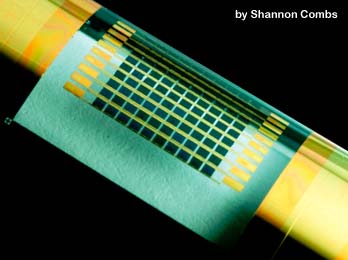
Thin Film Solar
While silicon is the industry common semiconductor in many electric units, which includes the photovoltaic cells that pv panels use to transform sunshine into power, it is not really the most efficient material on the market.
For instance, the semiconductor gallium arsenide and associated ingredient semiconductors give nearly double the performance as silicon in solar devices, but they are rarely used in utility-scale applications because of their excessive manufacturing cost. University of Illinois. (http://illinois.edu/) teachers J. Rogers and X. Li explored lower-cost methods to produce thin films of gallium arsenide that also made possible usefulness in the types of products they might be integrated into.
If you can minimize significantly the cost of gallium arsenide and some other compound semiconductors, then you might expand their range of applications.
Usually, gallium arsenide is placed in a single thin layer on a small wafer. Either the ideal device is created right on the wafer, or the semiconductor-coated wafer is cut up into chips of the desired size. The Illinois group made the decision to put in several levels of the material on a simple wafer, producing a layered, “pancake” stack of gallium arsenide thin films.
If you grow ten layers in 1 growth, you simply have to fill the wafer one time. If you do this in ten growths, loading and unloading with temp ramp-up and ramp-down take a lot of time. If you consider exactly what is needed for each growth – the machine, the preparation, the time, the workers – the overhead saving this solution gives is a important expense reduction.
Following the researchers independently peel off the levels and transfer them. To accomplish this, the stacks alternate layers of aluminum arsenide with the gallium arsenide. Bathing the stacks in a solution of acid and an oxidizing agent dissolves the layers of aluminum arsenide, freeing the individual small sheets of gallium arsenide.
A soft stamp-like system picks up the levels, one at a time from the top down, for shift to another substrate – glass, plastic-type or silicon, depending on the application. After that the wafer can be used again for another growth.
By performing this it’s possible to create a lot more material much more rapidly and much more price efficiently. This process could produce bulk quantities of material, as opposed to simply the thin single-layer manner in which it is usually grown.

Small Sheets Of Gallium arsenide
Freeing the material from the wafer additionally opens the chance of flexible, thin-film electronics made with gallium arsenide or some other high-speed semiconductors. To make products that could conform but still keep higher efficiency, that is significant.
In a paper written and published on-line May 20 in the publication Nature (http://www.nature.com/), the team details its methods and shows three types of products using gallium arsenide chips manufactured in multilayer stacks: light products, high-speed transistors and solar cells. The authors also provide a comprehensive cost comparison.
Another benefit of the multilayer method is the release from area constraints, particularly important for photo voltaic cells. As the levels are eliminated from the stack, they may be laid out side-by-side on one more substrate to generate a significantly bigger surface area, whereas the typical single-layer procedure limits area to the size of the wafer.
For photovoltaics, you want big area coverage to get as much sunshine as achievable. In an extreme case we could develop adequate layers to have 10 times the area of the traditional.
After that, the group programs to explore more potential product applications and additional semiconductor materials which could adapt to multilayer growth.
.
SOURCE: University of Illinois Researchers Demonstrate Us Little Known Methods to Produce More Efficient Solar panels
AUTHOR: Shannon Combs | residentialsolarpanels.org
.


